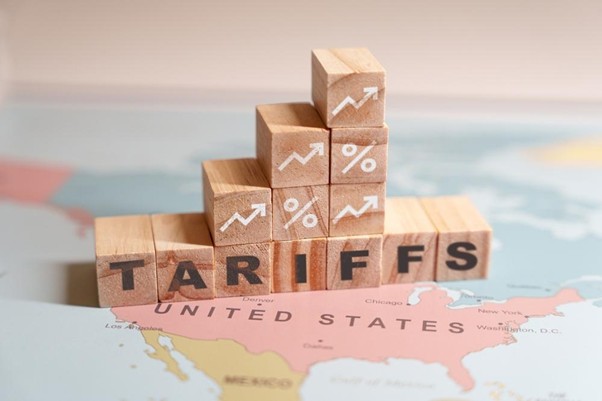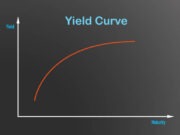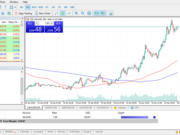
The U.S. housing market doesn’t operate in a vacuum. Broader economic policies — like tariffs — can ripple through the economy and impact everything from home prices to the mortgage interest rates you’ll pay over the life of a loan.
In 2025, with new tariffs making headlines and inflation still a top concern for American households, it’s more important than ever to understand how these international trade decisions could impact your ability to buy or refinance a home.
Let’s examine tariffs, how they affect mortgage rates, and what homebuyers and homeowners should watch for in the months ahead.
What Are Tariffs, and What’s Happening in 2025?
Tariffs are taxes imposed by the government on imported goods. They’re typically used to protect domestic industries or as leverage in trade negotiations. When tariffs are increased, foreign-made products become more expensive, influencing prices across multiple sectors.
In early 2025, the U.S. reintroduced a series of “reciprocal tariffs” under President Trump’s administration. Branded as a patriotic move to strengthen American industry, these new tariffs target a range of foreign goods — especially construction materials like steel, aluminum, and lumber.
The effects are already being felt: economists and builders are warning that these price hikes could have downstream effects on new housing construction, inflation, and, ultimately, the mortgage market.
Tariffs and Inflation: Why It Matters for Mortgages
The connection between tariffs and mortgages may not seem obvious at first. However, tariffs often lead to higher consumer prices, which contributes to inflation.
Here’s how the chain reaction works:
- Tariffs raise the cost of imported goods (e.g., lumber, appliances, building materials).
- Businesses pass those higher costs on to consumers in the form of price increases.
- Inflation rises, making everything — from groceries to housing — more expensive.
- The Federal Reserve may raise interest rates to combat inflation.
- Higher interest rates lead to higher mortgage rates, increasing monthly payments and reducing affordability.
According to homebuilders, the most recent tariffs could increase the cost of building a new home by over $9,000 — a cost that would likely be passed directly to buyers.
What Does This Mean for Mortgage Rates?
It’s a bit of a balancing act.
In the Short Term: Mortgage Rates May Dip
Economic uncertainty often rises immediately after a major policy announcement like tariffs. Investors typically respond by putting money into safer assets like U.S. Treasury bonds. This pushes Treasury yields down, and since mortgage rates are closely tied to those yields, mortgage rates can fall — at least temporarily.
In fact, shortly after the tariff news broke in early 2025, mortgage rates hit their lowest point of the year at around 6.63%, offering a small window of relief for prospective buyers.
In the Long Term: Expect Rates to Climb
If tariffs stay in place and inflation continues rising, the Federal Reserve may respond by raising the federal funds rate again. This benchmark rate influences lending rates across the economy, including mortgages.
Higher inflation = higher rates = higher monthly payments.
It’s also possible that continued tariff tensions could lead to retaliation from trade partners, slowing global trade and even tipping the U.S. toward a recession — a scenario that introduces even more volatility into the mortgage market.
Tariffs and Home Prices: The Construction Connection
Mortgage rates aren’t the only factor to worry about. New home prices are also affected by tariffs. When the cost of construction materials rises due to tariffs, builders are forced to raise prices — or scale back on building altogether.
This can lead to two outcomes:
- Fewer homes being built, tightening inventory and making it harder to find affordable homes
- Higher prices for new homes, especially in growing suburban markets
In short, tariffs can make it more expensive to build and buy homes — a double whammy when paired with higher mortgage rates.
What Should Buyers and Homeowners Do?
While tariffs and their effects are mostly outside your control, there are steps you can take to make smarter home financing decisions in 2025:
1. Lock In a Mortgage Rate Early
If you plan to buy a home this year and see favorable mortgage rates, consider locking in your rate. This protects you from future rate hikes if inflation continues climbing due to tariffs and other factors.
2. Monitor Economic News
Stay informed about trade policies, inflation data, and Federal Reserve decisions. These indicators can give you clues about where mortgage rates may be headed next.
3. Consider Refinancing Before Rates Rise
If you currently have a mortgage and your rate is above today’s averages, refinancing could help lower your monthly payments — but don’t wait too long. If inflation worsens, today’s rates might look like a bargain a few months from now.
4. Work with a Trusted Mortgage Partner
Navigating economic uncertainty is easier with a reliable guide. DSLD Mortgage has decades of experience helping homebuyers and homeowners secure affordable loans, even in unpredictable markets.
Is Now Still a Good Time to Buy?
That depends on your financial situation, but timing the market perfectly is nearly impossible. Mortgage rates, home prices, and construction costs all fluctuate. What matters most is:
- Your job stability and income
- Your long-term goals
- Your ability to comfortably afford a mortgage payment, even if rates shift slightly.
If you find a home that fits your needs and budget — and you’ve secured a solid rate — there’s no reason to wait for “perfect” conditions.
Final Thoughts
Tariffs might feel like distant policy decisions, but they can directly affect your wallet — especially if you’re in the market for a home. By increasing inflation, reducing supply, and prompting interest rate hikes, tariffs can tighten affordability in the short and long term.
That’s why it’s essential to stay informed and make proactive moves regarding home financing.


































